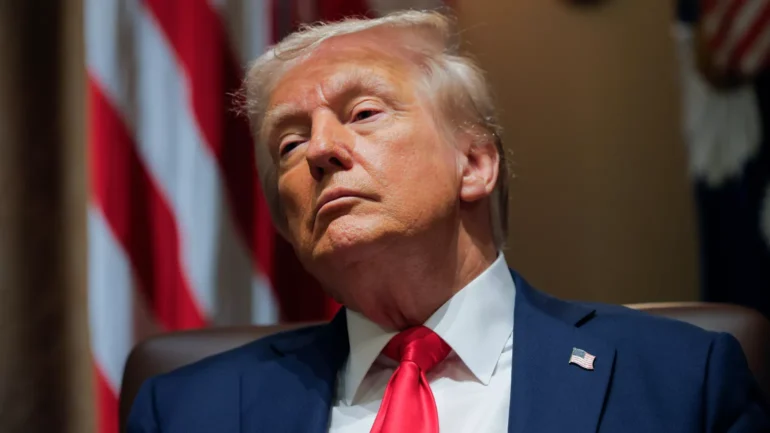On July 12, 2025, President Donald Trump announced plans to impose 30 percent tariffs on goods from the European Union (EU) and Mexico, two of the United States’ largest trading partners, starting August 1. This bold move, shared through letters posted on Truth Social, has sparked intense debate about its potential impact on global trade, American consumers, and international relations. With the EU and Mexico accounting for roughly one-third of U.S. goods imports, these tariffs could reshape economic relationships and affect everything from car prices to pharmaceutical costs.
A Strategic Strike in Trade Policy
Trump’s announcement is part of a broader strategy to address trade imbalances and protect American interests. The U.S. imported $605 billion in goods from the EU and $505 billion from Mexico in 2024, making them critical players in the U.S. economy. The EU, which includes powerhouse nations like Germany, France, and Italy, primarily sends pharmaceuticals and machinery to the U.S. Mexico, a key partner in the U.S.-Mexico-Canada Agreement (USMCA), supplies vehicles, electronics, and agricultural products like fruits and beer. However, the U.S. trade deficit with these partners—$235.6 billion with the EU and a significant deficit with Mexico—ranks among the highest globally, second only to China.
The proposed tariffs mark an escalation from earlier rates. The EU faces a 10 percentage point increase from the “Liberation Day” tariffs Trump announced in April, while Mexico’s new 30 percent rate is a 5 percentage point hike from the 25 percent tariff imposed in March over concerns about fentanyl smuggling. Trump’s letters also hinted at flexibility, leaving room for negotiations to lower the rates before the August 1 deadline.
The Fentanyl Factor and Mexico
A key driver of the tariffs on Mexico is Trump’s frustration with the country’s efforts to combat fentanyl smuggling. In his letter to Mexican President Claudia Sheinbaum, Trump accused Mexico of failing to control cartels, which he claims are turning North America into a “Narco-Trafficking Playground.” This follows a 25 percent tariff on non-USMCA-compliant goods from Mexico and Canada, plus a 50 percent tariff on steel and aluminum. Mexico’s government, aware of the impending letter, called the tariffs “unfair” but has already begun negotiations with U.S. officials to address the issue and protect businesses and jobs.
The EU’s Response: Negotiation or Retaliation?
The EU, led by European Commission President Ursula von der Leyen, responded cautiously but firmly. Von der Leyen emphasized the desire for a negotiated agreement by August 1 but warned that the EU is prepared to “safeguard EU interests” with “proportionate countermeasures” if needed. A 30 percent tariff could hit European exporters hard, especially in countries like Ireland, a major pharmaceutical supplier to the U.S., where Trump has threatened a staggering 200 percent tariff on drugs. Italian Prime Minister Giorgia Meloni also stressed the importance of avoiding “polarization” to secure a deal.
The EU has made concessions, such as dropping plans for a digital tax that concerned the U.S., signaling a willingness to compromise. Commerce Secretary Howard Lutnick indicated that a trade deal with the EU is close, potentially averting the tariffs. However, Trump’s demand for “complete, open Market Access” with no tariffs on U.S. goods remains a sticking point, and it’s unclear if the EU will agree.
Will Trump Follow Through?
Trump’s tariff threats are not new. Since taking office, he has repeatedly announced, delayed, or canceled major tariffs, earning the nickname “TACO” (Trump Always Chickens Out) from critics. However, sources close to the president suggest he may act this time, frustrated by stalled talks and eager to prove his resolve. The tariffs would primarily be paid by American importers, potentially raising prices for U.S. consumers on everything from Mexican avocados to European medicines. Trade experts, like UBS’s Ulrike Hoffmann-Burchardi, urge caution, noting the uncertainty about whether Trump will follow through.
Global Implications
The tariffs could have far-reaching effects. For American consumers, higher import costs might mean pricier goods at a time when inflation is already a concern. For the EU and Mexico, the tariffs threaten jobs and economic growth, prompting both to negotiate urgently. Other countries, like India, are also in Trump’s sights, with potential tariffs of 15 to 20 percent looming. Meanwhile, Trump’s promise to waive tariffs for companies that build in the U.S. could shift global manufacturing patterns.
As August 1 approaches, the world watches to see if Trump’s threats will materialize or if negotiations will prevail. For now, the EU and Mexico are racing against the clock to strike a deal, while American businesses and consumers brace for potential changes. One thing is certain: Trump’s aggressive trade stance is shaking up the global economy, and the stakes couldn’t be higher.
